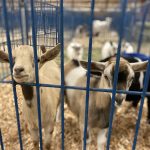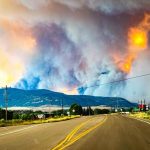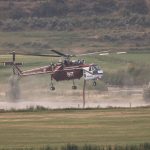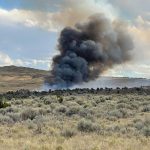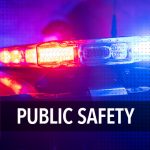Working group offers beaver education, site visits, mitigation funding

Jeremiah Psiropoulos/Courtesy photo
Extensive education and trash mitigation efforts have helped community members learn how to better co-exist with bears, and now agricultural, environmental, conservation and wildlife nonprofit organizations and agencies hope the same can be accomplished for beavers in the Yampa Valley.
The collaborative Yampa Valley Beaver Working Group, which started in 2024, has grant funding available to complete on-site physical mitigation measures to allow beavers to co-exist on a landowners’ property. With mitigation efforts, landowners can take advantage of the beavers’ natural ecological benefits without having to resort to trapping, relocating or killing the animals. The group is working to manage the resources and health of the Yampa River watershed by protecting and increasing beaver populations and habitat.
The working group is led by Emily Burke, conservation program manager at Friends of the Yampa, and Ryan Messinger, resilient watersheds program manager at Yampa Valley Sustainability Council. The co-leaders are completing the BeaverCorps Program training through the Beaver Institute in Massachusetts.
Messinger said the big-picture goal of the working group is to harness the ecological benefits of beavers to better steward the Yampa River, its tributaries and its watersheds by building critical riparian and wetland habitat, improving water quality, sequestering more carbon, and increasing resilience to drought, wildfires and floods.
“Humans like to live in the valley bottom where beavers also like to live, and that conflict has impacted beavers’ ability to rebound to historic population levels,” Burke said. “A lot of good beaver habitat is unoccupied in the Yampa Valley.”
The working group has secured grant funding to provide outreach and education to landowners and to perform physical mitigation measures, with landowners required to provide a 25% matching payment for the projects.
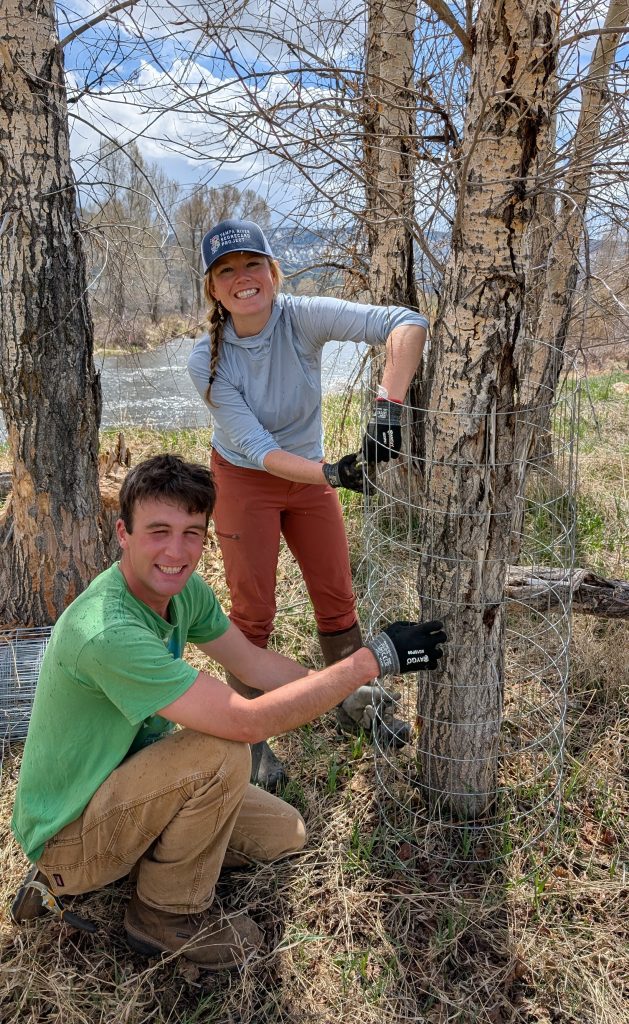
The North American beaver is the largest rodent in the continent. A Colorado native, it lives in and around ponds and streams. According to Colorado Parks and Wildlife, beavers are a keystone species with a disproportionately large influence on the ecosystems they inhabit.
“In ecologically suitable habitats, their activity can boost biodiversity, improve water storage and support climate resilience,” according to CPW. “However, beavers can also create conflicts where their habitat overlaps with human infrastructure.”
Messinger said the working group is promoting and assisting with three primary beaver habitat and coexistence techniques including caging of high-value vegetation and trees, fencing of culverts and installing pond-leveling pipes.
A pond leveler is a pipe that runs through a beaver dam at a set level so that when pond water rises to a certain height, the water runs through the pipe fed through the beaver dam to alleviate potential flooding problems.
The working group aims to assist six landowners with on-site mitigation work this late summer and fall. For landowner assistance with education, site inspections or mitigation work, email ryan@yvsc.org or emily@friendsoftheyampa.com.
The other current members in the beaver working group include CPW, Yampatika, Community Agriculture Alliance, U.S. Forest Service, River Network, Colorado Mountain College, Trout Unlimited, Colorado Cattlemen’s Agricultural Land Trust, city of Steamboat Springs, Nature Conservancy and USDA Animal and Plant Health Inspection Service.
In a time of heightened beaver preservation work, CPW has launched a public input process as part of a formal Beaver Conservation and Management Strategy. The public is encouraged to provide input online through Aug. 31 at EngageCPW.org.
“Increasing interest in beavers as an agent for ecological restoration prompted Colorado Parks and Wildlife to begin developing formal guidance to inform beaver conservation and management, including such topics as: harvest regulation, restoration, techniques for coexisting with beaver and relocation.” according to CPW.
CPW District Wildlife Manager David Rehak Suma in Steamboat Springs said the agency does not have a concern about the number of beavers, especially on public lands, yet beavers are no longer populating a lot of good beaver habitat in the valley.
“There is a balance of places where beavers want to be and where we want beavers in places where they can exist and create good habitat and not cause undue hardship,” Suma said
According to the working group, “Despite reintroductions and natural expansion, beavers have yet to return to many places where they used to live, and many areas could use more beavers to restore crucial wetland habitat and water resources.”
Burke said beavers, who prefer to swim, have difficulty reaching good habitat due to conflicts with developments that drain wetlands, roadways, drought and disconnected areas of the watershed.
For beaver enthusiasts who would live to learn more and get their hands dirty, a volunteer work day is planned for 8 a.m.-4 p.m. Aug. 20 in Moffat County. Volunteers can help the Yampa Valley Climate Crew and Nature Conservancy restore beaver habitat by constructing hand-built beaver dam analogs. The structures replicate beaver activity and help transform streams into prime beaver habitat. Beavers that come back to the area can continue the work of increasing drought resiliency, improving water quality and creating high-quality habitat for numerous species. Volunteers can sign up at YVSC.org/yvsc-events.
Colorado Parks and Wildlife has launched a public input process as part of a formal Beaver Conservation and Management Strategy. The public is encouraged to provide input online through Aug. 31 at EngageCPW.org.
To reach Suzie Romig, call 970-871-4205 or email sromig@SteamboatPilot.com.

Support Local Journalism

Support Local Journalism
Readers around Steamboat and Routt County make the Steamboat Pilot & Today’s work possible. Your financial contribution supports our efforts to deliver quality, locally relevant journalism.
Now more than ever, your support is critical to help us keep our community informed about the evolving coronavirus pandemic and the impact it is having locally. Every contribution, however large or small, will make a difference.
Each donation will be used exclusively for the development and creation of increased news coverage.


